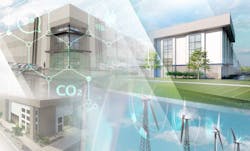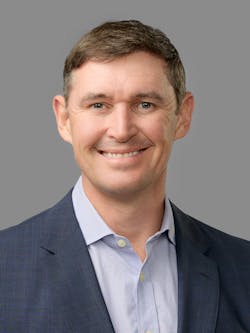What We (Don’t) Know About Data Center Sustainability
We will continue to learn new ways we’re wrong about the environmental impact of our preferred caffeination methods. Our thinking about the impact of the data center has evolved similarly. From the pre-PUE days where it was typical for mechanical loads to equal IT loads, to the tradeoffs between energy and water, to the more recent focus on science-based targets and Scope 3 emissions, we have learned a lot, and will continue to.
PUE as the end-all sustainability metric
For some time now, power usage effectiveness (PUE) has been the data center efficiency metric used as a main conversation point on sustainability. Prior to the metric, it was widely accepted that facility loads would match or even exceed IT loads, making PUEs of 2.0 or more typical. Indeed, until we began to measure PUE you could argue that there really wasn't much of an effort to improve energy utilization within the data center industry.
It took a lot of collaboration between all stakeholders to come around to warmer supply air temperatures, but as data center users and operators became more comfortable with higher temperatures and various ways to economize, the thinking about PUE evolved, and operators began to target – and reach – PUEs well under 1.5. You could say that the focus on PUE in the data center industry has led to significant improvements in our understanding of a data center's environmental impact and overall sustainability. But as it only represents the energy used by the facilities' mechanical and electrical systems, PUE was never intended to be a broad measure of emissions impact, much less a holistic measure of sustainability.
What about water?!
More recently, the spotlight has been placed on the data center industry’s water use. Water usage effectiveness (WUE) is an important measure which, alongside PUE, does provide a more holistic view of a data center’s environmental impact. WUE represents an important evolution in how we think about the impact of the data center, because there are tradeoffs between PUE and WUE. In most instances, comparing sites with like-for-like operating conditions, adiabatically cooled mechanical systems use less power than those that are just air cooled, but they do so with significant water use. In some locations where water is scarce it may sound rational to avoid water use on site for the rejection of heat, but one must dig deeper.
How to strike the balance that will produce the most ‘sustainable’ outcome really depends on local factors. As Google’s Senior Vice President of Technical Infrastructure Urs Hölzle wrote recently in a post titled Our commitment to climate-conscious data center cooling, “There is no one-size-fits-all solution.” For example, given that renewable power generation uses less water than traditional Rankine cycle-based plants, a more power-intensive air-cooled data center using renewable energy could have a smaller total water footprint than an evaporatively assisted data center in the same location. Conversely, in locations where power is generated by way of a Rankine cycle, an evaporatively cooled data center could use less water than the air-cooled equivalent. That tradeoff analysis is particularly relevant in water-constrained markets like Phoenix, where some local policymakers have denied new data center permits because of water use concerns, despite the high water usage associated with gas and nuclear power generation (the predominant power sources in Phoenix).
Beyond PUE and WUE – science-based targets
The next step in the evolution of our thinking about sustainability is to holistically consider the data center’s environmental impact across its lifecycle. Paul Lin and Robert Bunger at Schneider Electric made a significant contribution to that thinking with their whitepaper, Guide to Environmental Sustainability Metrics for Data Centers.
The framework includes five categories with 23 metrics “for data center operators in various stages of their sustainability journeys to take control of sustainability goals”:
Energy
- Total energy consumption
- Power usage effectiveness (PUE)
- Total renewable energy consumption
- Renewable energy factor (REF)
- Energy reuse factor (ERF)
GHG emissions
- GHG emissions (Scope 1)
- Location-based GHG emissions (Scope 2)
- Market-based GHG emissions (Scope 2)
- GHG emissions (Scope 3)
- Location-based carbon intensity (Scope 1 + Scope 2)
- Market-based carbon intensity (Scope 1 + Scope 2)
- Carbon usage effectiveness (CUE)
- Total carbon offsets
- Hour-by-hour supply and consumption matching
Water
- Total site water usage
- Total source energy water usage
- Water usage effectiveness (WUE)
- Total water use in supply chain
Waste
- Total waste generated
- Waste landfilled
- Waste diverted
- Waste diversion rate
Land & biodiversity
- Mean species abundance (MSA)
Much of the industry’s focus is now on identifying GHG emissions and opportunities to reduce those, which encompasses energy efficiency in both mechanical and electrical systems. Most large companies have committed to science-based emissions reductions targets – in line with limiting global warming to well-below 2°C above pre-industrial levels. Many have announced plans to achieve net-zero emissions or even be carbon negative by 2030.
Next stop: Scope 3 emissions
The first step on the path to becoming carbon neutral is developing a baseline of emissions. That’s difficult enough thinking about the data center in isolation; it’s exponentially more complicated when considering the entire value chain, known as Scope 3 emissions. Scope 3 reveals how much carbon is embedded in all facets of the facility – from batteries in the UPS to concrete and steel in the building – as well as emissions from upstream and downstream in the supply chain.
Schneider Electric’s Lin and Bunger argue that Scope 3 “is poised to become the most significant contributor to a data center’s overall GHG emissions.” The researchers’ latest whitepaper, Recommended Inventory for Data Center Scope 3 GHG Emissions Reporting, offers the first standardized data center-relevant framework for Scope 3 accounting and reporting. It includes nine emissions source categories and their data center specific subcategories:
Purchased goods and services
- Core and shell (materials)
- Cloud services
Capital goods
- IT equipment
- Power equipment
- Cooling equipment
- Others (i.e., rack, fire protection, lighting)
Fuel- and energy-related activities
- Fuels (i.e. diesel, natural gas)
- Energy (i.e. electricity, cooling)
Upstream transportation and distribution
- Shipments via road, rail, air, and marine
Waste generated in operations
- Solid waste management
- Wastewater management
Business travel
- Air, rail, bus, and automobile travel
- Hotel night stays
Employee commuting
- Automobile travel
- Public transport
- Others (e.g., telecommuting)
Upstream leased assets
- Leased vehicles
- Leased buildings
- Leased colocation data center space (i.e., U-space, rack-space, IT room, or even the whole data center)
Downstream leased assets
- Multi-tenant data centers
- Single-tenant data centers
Establishing a baseline for Scope 3 emissions, setting targets, and then achieving those targets is the most significant challenge in the industry today. Success requires collaboration across the value chain, which is one reason why Stream is proud to be a member of the iMasons Climate Accord, a “coalition united on carbon reduction in digital infrastructure” which has the mandate to “achieve global carbon accounting of digital infrastructure to influence market-based decisions and drive the industry to achieve carbon neutrality.”
It’s likely there are sources we still have not captured and it’s no doubt that our understanding of a data center’s environmental impact will continue to evolve. Still, we must take action to mitigate our environmental impact, and we must work together to do that. At Stream, in alignment with our guiding principles, we’re committed to supporting our customers’ climate action goals, and to working with our partners and even our competitors to advance our understanding of how best to mitigate the environmental impact of the data center across the value chain.
Stuart Lawrence is Vice President of Product Innovation and Sustainability at Stream Data Centers, which builds and operates for large and sophisticated enterprises and hyperscalers – 24 data center developments since 1999, with 90% of our capacity leased to the Fortune 100.



